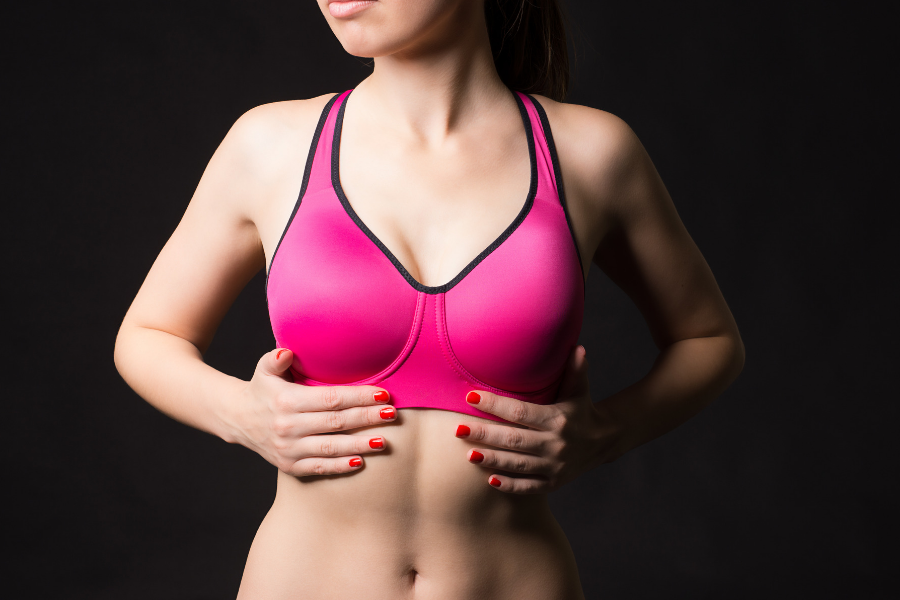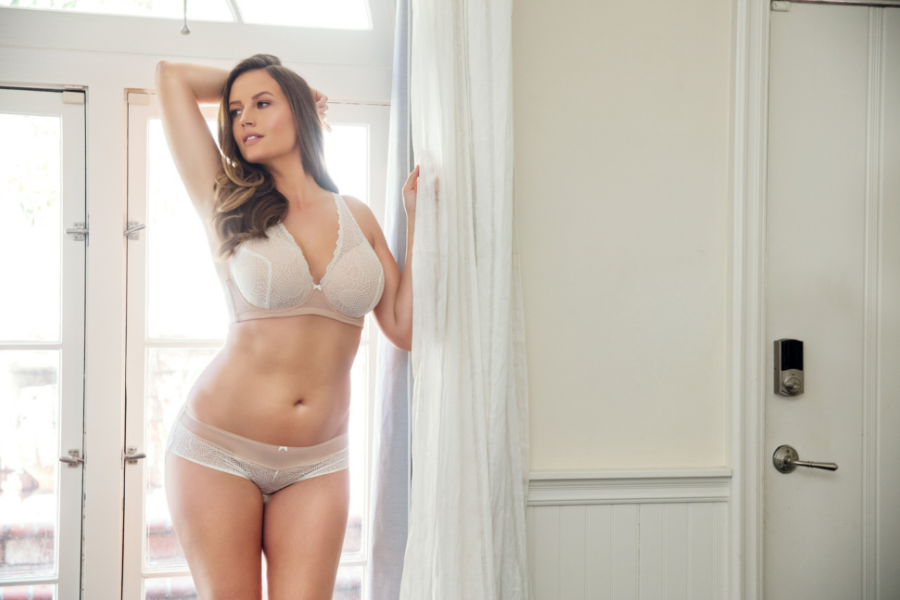5 Easy Things You Can Do Right Now To Protect Your Breasts
Did you know that about 1 in 8 U.S. women will develop invasive breast cancer over the course of her lifetime? The reality is, there are certain risk factors that we have no control over, like a family history of the disease, age, and exposure to radiation. However, there are many other lifestyle factors that we can control.
Of course, there is no surefire way to prevent breast cancer, but there are many things you can do to reduce your risk, including eating healthier foods and wearing the right undergarments.
Here are some of the simplest ways to protect your breasts from any kind of harm.
Get walking
There are obviously lots of reasons to get regular exercise, and one of them is reducing your breast cancer risk. This is likely because fat cells produce estrogen, and high levels of that particular hormone have been linked to the development of breast cancer (among other cancers). When you work out, your fat cells become smaller, thus producing less estrogen.
Guess what? You don’t have to incorporate intense HIIT sessions or spin classes to reap the benefits, either — simply getting some daily steps in could make a difference. An American Cancer Society study found that women who spent six hours or more sitting every day (when not working) had a 10 percent greater risk for invasive breast cancer compared with women who sat less than three hours a day. Not only that, but another 2013 study published in the journal Cancer Epidemiology, Biomarkers, and Prevention revealed that merely walking one hour a day can lower your chances of getting breast cancer. And the more physically active a woman was, the lower her risk was: moderate physical activity (brisk walking) reduced breast cancer risk by 14 percent, while “vigorous” physical activity (jogging, cycling, aerobics) reduced breast cancer risk by a notable 25 percent.
Wear a sports bra
Here’s the thing: Wearing a bra is a very personal choice. Some women like to wear them to bed, some don’t. Some feel comfortable going bra-less during the daytime, others wouldn’t ever dream of it. Typically, breast size has a lot to do with these decisions. But no matter your breast size, you should definitely wear a supportive sports bra while exercising.
Physical activity — particularly the medium to high impact kind (running, aerobics, plyometrics) — expose your breasts to a lot of movement, and thus, potential strain. If you aren’t wearing a supportive sports bra to minimize that movement, you could cause damage to the Cooper’s ligaments, which maintain your breasts’ shape and structure, and keep them looking perky. So, in order to prevent not only sagging but also discomfort or pain during and after exercise, be sure to wear a well-fitting sports bra with plenty of support.
Related: 7 Things To Do To Maintain Your Breast Health
Slather on the sunscreen
Whether you’re lounging out by the pool, stretched out on a towel at the beach, or simply running errands in a V-neck T-shirt, don’t forget to lather up your chest with sunscreen. According to the Skin Cancer Foundation, a whopping 90 percent of nonmelanoma skin cancers are linked to exposure to UV radiation from the sun. And regular daily use of SPF 15 or higher can reduce your risk of developing melanoma by 50 percent, and squamous cell carcinoma (the second most common form of skin cancer) by 40 percent.
Add antioxidants to your diet
By now, you may have heard some of the hype around antioxidants, and their cancer-fighting powers. These substances — which include vitamins C, E, and A, as well as lycopene and beta-carotene — may protect your cells from free radical damage (which can lead to cancer). Many fruits and veggies contain these vitamins, but some are especially antioxidant-rich.
For example, tomatoes and guava are both chock full of lycopene, and broccoli and other cruciferous vegetables also have a high concentration of antioxidants. Not only that, but according to the Physicians Committee for Responsible Medicine, these veggies can reduce breast cancer risk by lowering the production of “bad” estrogen while simultaneously boosting levels of “good” estrogen. Beta-carotene, which is found in carrots, sweet potatoes, and squash, is considered a carotenoid — and The Institute of Medicine reports that studies have shown women who consume carotenoid-rich foods have a 19 percent lower risk of breast cancer.
Know your breasts
There’s a very good reason why The National Breast Cancer Foundation recommends that women of all ages perform breast self-exams once a month: Getting to know what they feel like can help you to be more alert to any changes. While self-exams can’t exactly prevent breast cancer, they can help you to detect any abnormalities ASAP, which means you can get treated as quickly as possible. Remember: Not all lumps, bumps, and other changes mean you have breast cancer. However, if you notice anything different about the way they look or feel, it’s definitely worth bringing it up to your doctor. Also, note that the best time to do your monthly exams is a week or so after your period ends, as this is when they’re least likely to be tender or swollen.
In addition to knowing what they look and feel like, it’s also important to know their density. Breast tissue that is denser has less fat and more glandular tissue. Why is this important? Because if you have dense breast tissue, you may need to be a little extra careful about monitoring your breast health. In fact, a study by radiologist Dr. Thomas Kolb revealed that mammograms missed 60 percent of breast tumors that were found via ultrasound in women who had dense breast tissue. If you don’t know how your breast density, ask your doctor for their help in figuring it out. And if you determine that you do have dense breasts, your doctor can advise you on what type of monitoring is most appropriate for you to minimize your health risks.
Just because you can’t exactly prevent cancer and other health problems altogether doesn’t mean you’re totally powerless. A little effort in terms of the bras you wear, the foods you eat, and the physical activity you engage in can make all the difference in reducing your risks of developing a variety of issues. Try adopting these five habits and you can definitely help protect your breasts from harm.
Related: Everything You Need To Know About Breast Self Exams
We Highly Recommend
Whether you’re shopping for new everyday bras or lingerie for a special occasion, it’s always a good idea to seek out a second opinion. We know how hard it is to find bras that fit well and feel good, especially when you’re doing it on your own. If you’ve ever felt unsure about your bra size or you just don’t know where to go to find good bras, it’s time to let a bra fitter help.
Many specialty lingerie boutiques offer bra fittings. Their expert bra fitters will take the pain and frustration out of bra shopping and do all the work for you. Even better, their product knowledge can save you time and money. Plus, they know where all of the best bras are hiding.
If you’ve struggled with finding bras in the right size, it’s time to make a change. Visit our specialty store locator to find a store near you and schedule an appointment.
Happy bra shopping!






